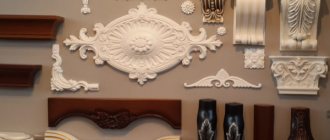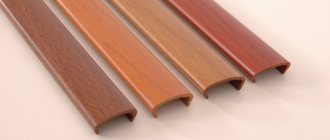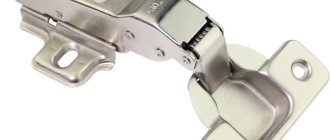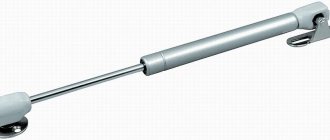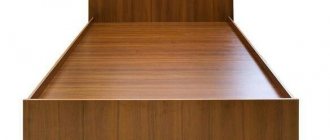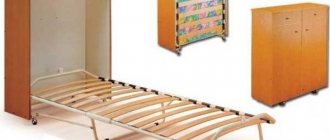The popularity of natural interiors is explained by their natural beauty and complete harmlessness to human health.
An integral part of this type of home decoration is wooden furniture: if it is not additionally coated with a protective layer of paint or furniture varnish, it will quickly become cracked and deformed. The latter finishing option is more preferable, as it allows you to preserve (and sometimes emphasize) the natural beauty of the wood.
Criterias of choice
When choosing a varnish for furniture, you need to focus on its features. The effect to be achieved is also taken into account. In general, when choosing a coating, the following factors are taken into account:
- safety;
- presence or absence of odor;
- fire resistance.
If you are processing furniture for a children's room, it is better to choose safe processing methods. This includes water-based materials.
Oil varnish for wood will help improve the decorative properties of furniture. If you want to age furnishings, you will need a coating with a craquelure effect.
On video: how to cover wood.
Features of the material
Nitrocellulose varnish (NC) is made on the basis of nitrocellulose - a chemical compound, cellulose nitrate ester. The resulting organic product has valuable properties - it helps protect wood from damage, creates a beautiful coating on it, which improves the aesthetic appearance of the product. The resulting varnish film is transparent, without color, or colored, and is quite durable.
An important feature of varnishes is that there is no special need for priming the surface, although sometimes primer is still applied. The product can be used even in hot or cold weather, but to obtain a high-quality coating it is recommended to add a solvent - up to 5%. This will help prevent the material from drying out.
Types of varnishes by effect
Depending on the effect you want to get after using the varnish, the following types of coatings are distinguished:
- Glossy and semi-gloss. This coating has a characteristic shine and emphasizes the texture of the wood. Damage is visible on the glossy surface, but high-quality varnishes have good wear resistance.
- Matte and semi-matte. To make the varnished surface look as natural as possible, choose a matte varnish. It is first carefully sanded, after which a varnish coating is applied.
- Colored. Give the furniture the necessary shade. After drying, a durable film is formed on the surface. You can choose from a wide range of colored varnish: from light yellow to rich dark shades.
- Craquelure. After their application, a cracking effect is created on the surface. Furniture with a craquelure effect is suitable for interiors in retro or Provence style.
Furniture polishing
The final stage is finishing with polishing paste. To do this you will need polishing paste. You can use furniture ones, but automobile ones are more often used. Any one that does not contain wax is suitable (for example, “Anticirapin”). Good results are given by those that contain at least a small percentage of Teflon. They also smooth out small scratches and irregularities.
Polishing furniture after applying varnish takes less time than all others. For this stage you will need natural felt - they use it to rub the paste over the surface. In order not to work manually, a felt circle cut to size is attached to the Velcro of a sander or angle grinder. Apply paste to the surface to be polished, turn on the sander at maximum speed and bring the furniture to the desired level of shine. With good preparation, it is possible to obtain a mirror surface.
Types of varnishes by composition
Depending on the components included in the varnishing material, the following varieties are distinguished:
- Oily. Initially, materials of this type were produced on the basis of natural resin. Subsequently, natural oils and artificial additives began to be used in their production. Oil coatings come in a wide variety of colors. The matte layer applied to pieces of furniture looks especially impressive.
- Alkyd. Alkyd-type varnish has good properties: strength, resistance to moisture and lack of color. Its composition includes alkyd resins and organic solvents. The disadvantage of this coating is the long drying time, which can take up to 3 days. Certain types of alkyd varnish dry in 24 hours. Furniture is treated with varnish using a roller or sprayer.
- Water based. The optimal solution for wooden furniture is water-based materials. This includes acrylic varnish for furniture, which forms a durable film. The coating becomes hard as the liquid evaporates. Such materials are odorless, completely safe for humans, dry quickly and do not support combustion. Water-based furniture varnish changes the color of wood. The disadvantage of this coating is susceptibility to moisture. Therefore, it is suitable for processing products intended for the bedroom, living room, and office.
- Alcohol. Alcohol varnishes are made from alcohol and natural resins. They provide high strength and gloss of the coating. Their disadvantage remains low resistance to moisture. However, this wood varnish is suitable for surfaces that need polishing.
- Polyurethane. Polyurethane-type varnishes are highly durable and provide durability to furniture. They are often used to cover floors. Polyurethane varnish has a high price, but the costs are recouped due to the excellent characteristics of the coating. When applying, you must follow the work order specified in the instructions.
- Nitrovarnishes. Nitrovarnishes are produced on the basis of resins, colloxylin, plasticizers and solvents. This coating takes several hours to dry. Nitrovarnish has good strength. Its disadvantage is that it is harmful to human health, since it contains toxic substances. When choosing nitro varnish, you need to remember to use protective equipment.
Preparation: sanding and priming
First you need to clean the wood from the remnants of the old varnish and sand it properly. Large varnish residues are carefully removed using a scraper or knife. Then you can start sanding. To do this you will need: several pieces of sandpaper of various grains, a sander or small block, and a piece of thick rubber. Of course, it is much faster to work with a grinding machine. But if it is not available, then you will have to use a wooden block. Sandpaper is attached to it and flat surfaces are sanded.
In any case, convex furniture elements will have to be sanded manually. In this case, instead of a block, dense rubber with a sufficient degree of elasticity is used so that shaped parts can be processed efficiently. The most complex curved elements are sanded using wooden sticks or plastic flexible rods - which is even more convenient. In certain areas it becomes necessary to sand with your hands or a finger wrapped in sanding paper to feel how much pressure you are using and not remove excess wood. This applies to furniture parts that require delicate handling.
Remember that you need to sand along the wood fibers. This is especially true for work using coarse-grained paper, the abrasive coating of which can leave deep scratches on furniture if sanded against the grain. As a rule, paper with large grains is used for initial processing of wood, and then it is replaced with sandpaper with finer grains. The choice of paper depends on the condition of the item being restored and the type of wood from which the furniture is made.
At the second stage of preparing furniture for varnishing, the working surfaces are primed. The primer not only provides better adhesion of the varnish to the wood, but also significantly reduces its consumption, since the primer seals the pores and small cracks in the wood. As primers, wood glue mixed with water, PVA glue mixed with wood powder, a mixture of turpentine and wax, as well as special liquid wax, which is sold in aerosol cans, are used. At the end of the priming process, you should wait until the wood is completely dry, and then finish sanding it with fine-grained paper and wipe the surface from dust. Only then can varnishing begin.
Types by purpose
If pieces of furniture are used in special conditions, then special types of coatings are chosen for coating.
According to their purpose, furniture varnishes are divided into several groups:
- water-repellent – protect products from moisture;
- weather-resistant – used to protect items exposed to constant weather conditions;
- heat-resistant – ensure the resistance of objects at high and low temperatures (from -40 to +250°C), exposure to aggressive chemical compounds;
- impact-resistant – create a coating of increased strength.
Methods of applying nitro varnishes
In production conditions, nitro varnishes are usually applied to the surface of finished products by spraying, in a magnetic field and using other mechanized methods.
If you need to varnish small-caliber products, for example, wooden handles, then just put them in a jar of nitro varnish for a couple of moments, then take them out, let the excess varnish drain, and then lay or hang the product to dry.
Color selection
How to choose a coating depends on the interior of the room where you plan to use the furniture. The colorless layer is used for items made of valuable wood. This coating emphasizes the beautiful texture of the wood and extends the service life of the products.
Color coating for less valuable species, protects the surface from external influences and improves its external properties. The matte layer significantly improves the decorative properties of wood.
The color of the coating is chosen taking into account the interior of the room. For spacious rooms, black and other dark shades are usually used. Black varnish on wood looks elegant and sophisticated.
A brown color that is as close as possible to natural shades looks natural in the room. Preference is given to a dark shade if you need to hide surface defects. If the space in the room is limited, then choose a coating of lighter colors.
Pre-grinding
Polishing furniture is a long process and it begins with sanding. First, all cracks and other defects are covered with wood putty of a suitable color. After it has completely dried (the period is indicated on the label), sanding begins.
A sander is best for polishing wood or veneer. Tape or disk is a matter of taste and preference; it also depends on the complexity of the furniture shape. You will also need a set of sandpaper from coarse (80) to very fine (1200) grit.
In extreme cases, an angle grinder with a special attachment (disc and Velcro) may be suitable. But when working with it, it is difficult to achieve a really good result - there is no required mobility of the sanding platform, so the result of such wood polishing will not be above average.
What you might need to varnish furniture
We start sanding with 80 grit. We use it carefully, removing only large irregularities. Then we repeat the treatment with sandpaper at 120, then at 180 and 240. During the work, we must periodically remove dust and inspect the surface to identify unevenness and other defects. sometimes they are better identified by touch.
Then take water and 320 grit sandpaper. Wet the surface to be sanded and the sandpaper. We sand everything again, but this time with water. At this stage, you should get a good result - everything should be smooth. If everything is satisfactory, we move on; if not, we polish it for some more time.
Rules for working with varnish
When interacting with paints and varnishes, you must adhere to the following recommendations:
- Processing is carried out only in rooms with good ventilation.
- There should be no open flame sources in the immediate vicinity.
- Protective equipment (gloves, goggles, respirators) must be used.
- Wood varnish is applied in strict accordance with the instructions.
- Before treatment, the surface is completely cleared of old coating.
- If there are cracks or deformations, they are eliminated using putty, after which the surface is cleaned.
- The products are first coated with at least one layer of primer.
- Furniture varnishes are applied in several thin layers.
Furniture varnish is a simple and affordable way to improve the decorative properties of objects. Its use extends the life of furniture, protects it from moisture, scratches and other influences. Which varnish should be chosen for the room depends on the type of room. Most modern materials are practical, odorless and easy to apply to wood.
Painting furniture with colored varnish (1 video)
Various types of varnishes for furniture (32 photos)
SONY DSC SONY DSCHow to polish furniture at home
Polished furniture has a very “ceremonial” appearance. It is quite specific, but many people like it. The difficulty is that it is easy to spoil a shiny surface, but it is difficult to restore its attractiveness. Often the only solution is to polish the furniture.
Polished furniture is good in classic interiors
The most common problem is scratches. You can also get rid of small ones using polishes with special properties. Deep ones, with damage right down to the wood or veneer, can only be removed by new polishing (if it is old Soviet-era furniture coated with nitro varnish). To do this, first completely remove all the old coating, then apply varnish and sand the entire part. That is, polishing furniture - new or old - occurs according to the same algorithm, with the only difference being that the old layer of varnish has to be removed.
If the product is newer, it is most likely covered with a thick layer of varnish. If the scratch is deep, but does not reach the veneer or wood, the situation is somewhat simpler. First, the scratched layer is cleaned off with 80 and 120 grit sandpaper. Then it is sanded with increasingly finer grains. Next, one or two layers of varnish are applied and, after drying, polished.
Another case when furniture polishing may be required is when the varnish becomes cloudy or yellowing. This happens often. The treatment is also not easy - completely removing the old varnish and applying a new one with polishing. Problems with all other marks that cannot be removed by conventional means are solved in the same way (read about the restoration of polished, veneered, wooden furniture here).
Varnishing can only be done on a horizontal surface.
One more point: furniture polishing is done only and exclusively in a horizontal position. To do this, you often have to take everything apart. It's difficult, but there is no other way out. You can only work on a horizontal surface.
Types of varnish oil coatings
How high-quality the varnish solution for a floor or other base will be largely depends on the quantity of resin and oil mixed. The type of composition will depend on the proportion of these ingredients; there are the following types:
- fatty varnish compositions. They are made from two parts oils and one part resin. These compounds are best suited for external street work; they have a high resistance to weather conditions and other negative factors;
- skinny mixtures. These solutions are characterized by a predominant volume of resin over the amount of oil; these varnishes cannot be used for external work. They are excellent for indoor processing, indoors, they have excellent stability, strength and long service life;
- semi-bold solutions. They are made from resin and oil mixed in equal proportions. They can generally be used indoors and outdoors.
So, the greater the proportion of oil in the composition, the more resistant to the harmful effects the varnish mixture will be, and the better it will protect the surface of the floor or other structure from mechanical stress and humidity.


